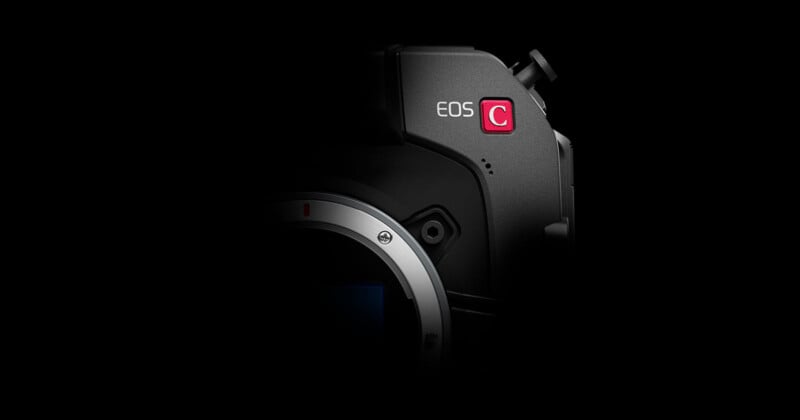![]()
While preparing PetaPixel‘s coverage of Canon’s impending Cinema EOS launch this week — which included a corner of an unknown RF-mount cinema camera — I realized just how little support the line has gotten since the launch of RF mount.
After starting its cinema series with the C300 back in 2011, Canon regularly added new cameras to the line almost annually up until 2020. Since then, only one camera has been announced for the line (the EOS R5 C). Perhaps even more surprising is that there are only two RF-mount Cinema EOS cameras at all: the R5 C and C70.
When I heard that, it didn’t sound right. For a decade, Canon’s Cinema EOS camcorder-style bodies were mainstays for mid- to high-end filmmakers. Through the 2010s, I feel like every documentary filmmaker I met was using at least one Cinema EOS camera — and they probably still are. It’s just surprising that Canon hasn’t been updating the line much at all since the RF mount debuted in 2018.
Canon’s RF-mount cinema options don’t cover all the bases with how the company has been approaching mirrorless. While there is a lot to like about the C70, it’s a crop-sensor camera and all of the high-end cinema glass that Canon has developed for the RF mount is made for full-frame. It’s the same argument that has been made regarding Canon’s APS-C cameras: there just aren’t a lot of lens options there because, up until recently, the RF mount was closed. Sigma and Tamron are finally being allowed to develop for crop sensor RF-mount cameras, but that doesn’t resolve the cinema glass issue and a full lineup of options from those two brands are still a long way off.
The new 24-105mm f/2.8L is basically tailor-made for filmmaking, for example.
While the R5 C can fully utilize those aforementioned full-frame lenses, it doesn’t use a battery large enough to take advantage of all of the camera’s capabilities (and it dies very quickly even when used where it can be), it lacks access to C-Log2, and it’s not in a form factor that many filmmakers prefer. It is, despite having access to cinema features, still a hybrid camera.
And that’s it. The last time Canon released a cinema-styled camera body was the C300 Mark III in 2020 and before that, the last time a cinema camera body featured a full-frame sensor was back in 2019 with the C500 Mark II. Canon’s 1-series gets most of the attention when it comes to a camera line that hasn’t seen an update since the move to mirrorless (the R1 is finally coming), but the company’s Cinema EOS line is just about as lacking in support.
Maybe Canon was willing to take a step back from cinema cameras for a while because of its relationship with RED — up until the very recent opening of APS-C to Sigma and Tamron, it was the only time since the RF mount was announced that a camera or lens that wasn’t manufactured by Canon was allowed to support Canon RF. Now that Nikon owns RED, however, Canon may be questioning this strategy and planning for the future — Nikon is investigating developing Z-mount cinema glass and hopes to have a new RED/Nikon camera within a few years.

Camera development takes between two and three years on average, so it’s unlikely that the expected Cinema EOS camera announcement next week is a response to Nikon’s recent RED acquisition and was instead planned for some time, but the timing is undoubtedly excellent. Canon has said it is optimistic about Nikon’s acquisition of RED but it’s unlikely that it is particularly happy that its historically greatest rival is suddenly a major competitor in the cinema space where it, previously, had never been able to play. Ramping Cinema EOS back up now is the best possible move.
It’s genuinely shocking that Canon allowed its Cinema EOS line to lapse to this degree given its track record through the 2010s but the changing tides of the market will likely spur both more and faster development going forward. The low bar of two cameras in five years is unlikely to be repeated.
